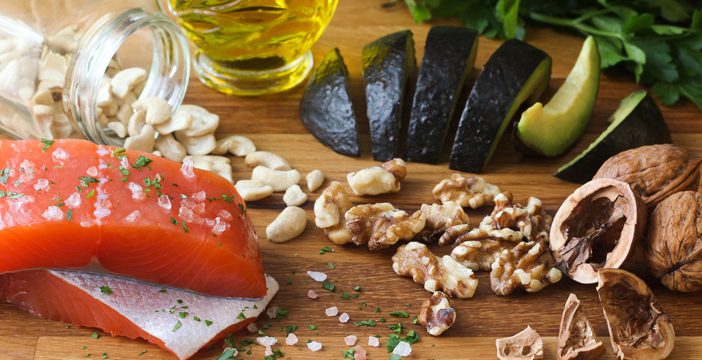
In this article, you will learn:
- what is an anti-inflammatory diet?
- what is the connection between diabetes and inflammation, and
- what are the recommendations for people with diabetes in terms of following this type of diet.
Inflammation is a process triggered by your immune system and is activated when your body recognizes anything that is foreign – such as a virus or plant pollen. In these circumstances, inflammation acts quickly and gradually subsides. However, sometimes inflammation persists even when you are not threatened by a foreign invader. Inflammation becomes harmful when it is prolonged and begins to damage healthy cells. Persistent inflammation underlies a variety of chronic medical conditions, including diabetes. To reduce levels of inflammation an anti-inflammatory diet can be helpful.
What is an anti-inflammatory diet?
The anti-inflammatory diet excludes foods that contribute to prolonged inflammation and includes foods that reduce inflammation. Foods that stimulate inflammation include processed meats, refined carbohydrates, and sweetened beverages. Anti-inflammatory foods include dark green vegetables, fatty fish, fruit and nuts. Here is a list of the top anti-inflammatory foods to eat for diabetes.
| Berries
|
Packed with fibre and powerful antioxidants to boost your body’s immune system, berries are also low on the Glycemic Index scale resulting in a lower blood sugar spike. |
| Nuts | Nuts are known for their benefit to heart health due to the healthy type of fat they contain. Regular nut consumption is also associated with improved A1C levels lower fasting blood sugar and improved insulin resistance. |
| Dark green and cruciferous vegetables | Dark green vegetables are packed with fibre as well as antioxidants such as vitamin A and vitamin C. Cruciferous vegetables such as broccoli, cauliflower, Brussels sprouts and kale also contribute to a lowered risk of heart disease and cancer. |
| Legumes (beans and lentils) | Legumes are a tasty and inexpensive source of fibre and protein and an ideal source of low Glycemic Index carbohydrates that have a much lower impact on glucose when eaten in place of refined grains and starches. |
| Fatty fish
|
Fatty fish such as salmon, trout, sardines and mackerel are full of the powerful anti-inflammatory omega-3 fatty acids EPA and DHA. Aim to eat two servings of fish per week. |
| Avocados
|
Avocados contain carotenoids and tocopherols, which have anti-inflammatory effects. High in monounsaturated fat, this superfood also has many other health benefits. |
| Tomatoes
|
Tomatoes are overflowing with vitamin C, potassium and lycopene. Lycopene has strong anti-inflammatory properties. |
What is the connection between diabetes and inflammation?
People with type 2 diabetes don’t produce enough insulin or their bodies can’t use the insulin they make adequately (insulin resistance). Insulin is a hormone that is made in the pancreas. It controls the amount of sugar in your blood. Insulin may also have an impact on obesity and the accumulation of fat cells around the belly and on major organs in the abdomen. These fat cells can produce chemicals that lead to inflammation. This form of internal inflammation may play a role in the development of chronic diseases like diabetes.
Studies have revealed that people who consume more anti-inflammatory foods and fewer pro-inflammatory foods have a decreased risk of cardiovascular disease and type 2 diabetes. People with diabetes or prediabetes can reap long-term benefits by choosing foods that not only help manage blood sugar levels, but also reduce inflammation.
Are there any recommendations regarding anti-inflammatory diets for people with diabetes?
An anti-inflammatory diet does not follow strict rules about calories or portion sizes rather, it suggests a variety of anti-inflammatory foods to eat daily. This requires people to plan their own meals. For more information on how much to eat, and when to eat, work with your registered dietitian. Diabetes Canada states that the Mediterranean-style diet – which is high in fruits, vegetables, nuts, whole grains, fish and healthy oils – may have anti-inflammatory and anti-oxidative effects. The Mediterranean diet most closely delivers an anti-inflammatory eating plan.
Learn more about the Mediterranean diet here.
When switching to a different eating style, it makes sense to start slowly. For example, begin by eating fewer packaged foods. Include anti-inflammatory foods at each meal gradually. Start by adding berries to oatmeal for breakfast, and adding a salad of dark leafy greens topped with beans, nuts and seeds at lunch. For dinner, try a serving of fatty fish such as salmon with a side of tomato and avocado slices.

